The Chaos Isn’t Slowing Down
The past two weeks have been a masterclass in external chaos. From political uncertainty to economic volatility, the landscape is shifting faster than organizations can plan for. And with more disruption on the horizon, it’s tempting for leaders to pause strategic planning altogether—after all, how do you plan when the world won’t sit still?
But here’s the truth: You don’t have to predict the future to prepare for it.
Leaders who fixate on external chaos without stabilizing their own organization will find themselves in permanent reaction mode—always scrambling, always behind. The smartest move in 2025 isn’t chasing growth or trying to guess what’s next. It’s making sure your own house is in order so when the next disruption comes, your organization is ready to respond instead of being forced to react.
Why Stability is the Smartest Strategy Right Now
- The External Swirl is a Given—Internal Chaos is Optional
The economy, politics, regulations—you can’t control these forces, but you can control your systems, priorities, and people. Leaders who anchor their organizations in clarity and disciplined execution will stay nimble while others flounder.
- Your Employees Need Stability More Than Ever
With so much external uncertainty, your workforce is looking to you for steady leadership. Stability doesn’t mean ignoring change—it means ensuring that your team isn’t left spinning when it comes. Organizations that provide clear priorities, steady communication, and well-defined expectations will retain and engage their best people, while competitors struggle with attrition and burnout. - Reaction is Not a Strategy—Readiness Is
Rapid shifts in priorities are inevitable right now. But that doesn’t mean strategy should be abandoned. The key is to shift from long-term forecasting to real-time readiness. This means strengthening internal processes, reducing inefficiencies, and ensuring that leaders at every level know how to execute when the time comes. - Stakeholders Expect Forward Motion, Even in Uncertain Times
Boards, investors, and customers don’t want to hear excuses about how hard planning is. They want to see resilience. Organizations that maintain stability and discipline will be the ones trusted to lead in uncertain times.
What Leaders Should Focus on Right Now
If long-term strategic planning feels impossible, shift your focus to building an organization that can handle whatever comes next.
✅ Regulate Your Own Emotions First – Your team looks to you for stability. Take time to process your reactions so you can lead with a calm, confident presence. Anxiety at the top trickles down—make sure you project steady leadership, not uncertainty.
✅ Communicate Clearly & Consistently – You don’t need all the answers, but you do need a clear, steady message. Be transparent about the decisions being made, acknowledge ambiguity, and give employees a sense of direction, even when the path is unclear.
✅ Align Teams on Clear Priorities – In times of uncertainty, shifting priorities can derail progress. Define what must get done, communicate it clearly, and reinforce it regularly to keep teams focused.
✅ Reduce Operational Friction – Now is the time to fix broken systems, eliminate inefficiencies, and streamline execution. When uncertainty strikes, friction slows everything down—make sure your organization runs as smoothly as possible.
✅ Strengthen Leadership at Every Level – Your employees don’t just need clarity from you—they need it from their direct managers, too. Equip your leadership team to navigate uncertainty with confidence so guidance is consistent across the organization.
✅ Ensure Financial and Operational Agility – The more adaptable your organization is internally, the better positioned it will be to handle whatever comes next externally. Flexibility in decision-making, budgeting, and resource allocation will set you apart.
Bottom Line: Stability is the Competitive Advantage in 2025
The external chaos isn’t stopping anytime soon. The organizations that will thrive in 2025 aren’t making bold bets on an unpredictable future—they’re creating internal stability so they can pivot when necessary without losing momentum.
The question isn’t how will you react when the next wave of chaos hits. The question is: Will your organization be strong enough to respond strategically?
📥 Want to get your house in order? Download the Chaos to Clarity Workbook and start building resilience today.




